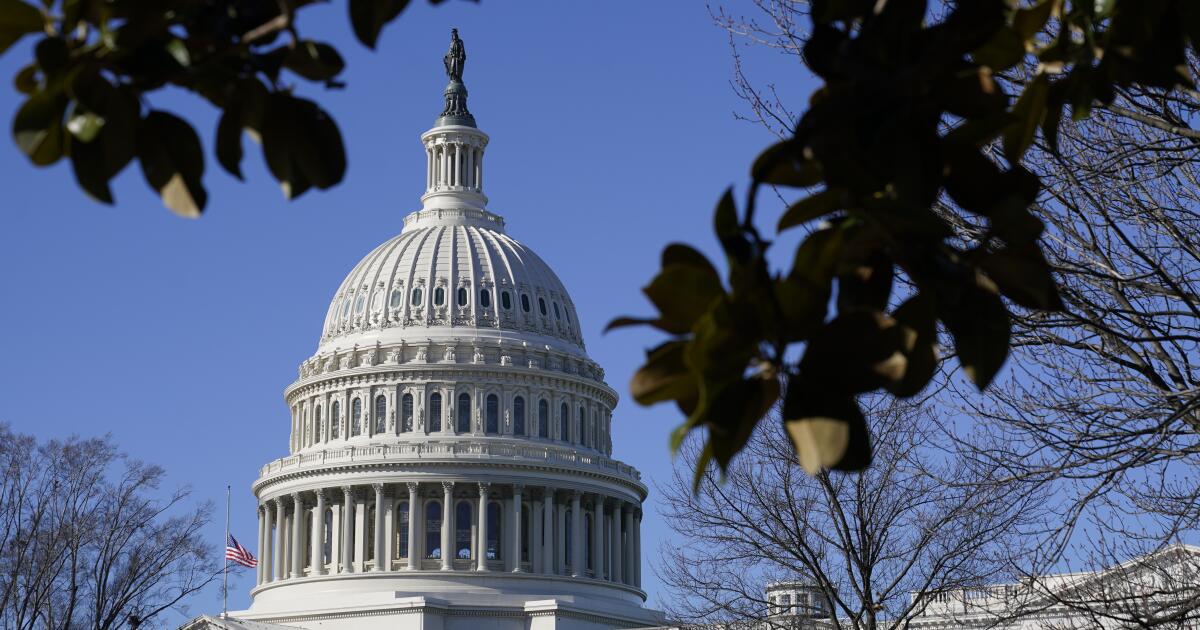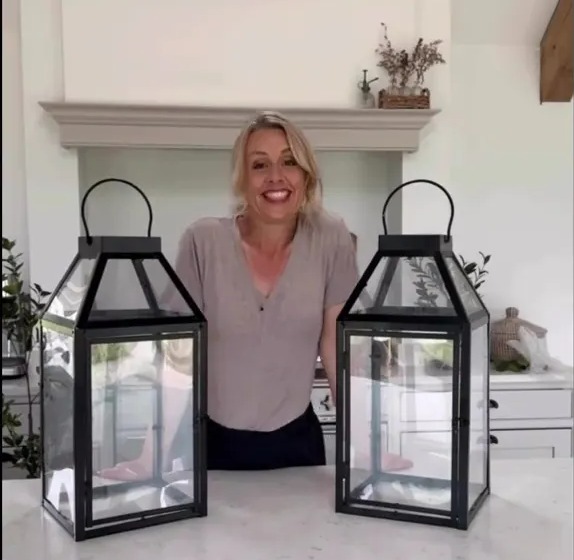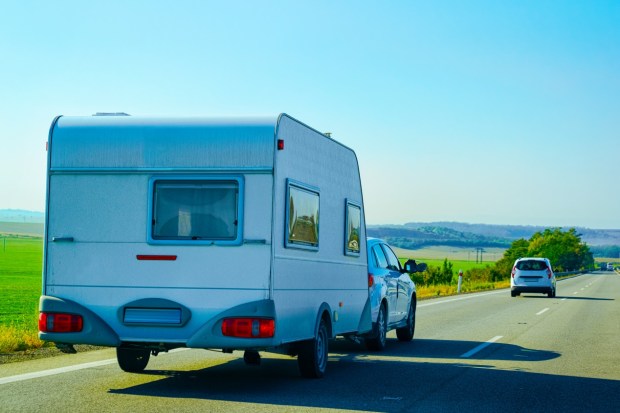Redistricting fight assumes closer midterm than history shows
A handful of seats are all that keep Republicans in control of the House, giving President Trump untrammeled sway over, well, pretty much everything, from the economy to the jokes on late-night TV to the design of the Cracker Barrel logo.
It’s a number that’s both tantalizing and fraught, depending on your political perspective.
For Democrats, that eyelash-thin margin means they’re thisclose to regaining power and a political toehold in next year’s midterm election. All they need is a gain of three House seats. For Trump and fellow Republicans, it means their hegemony over Washington and life as we know it dangles by a perilously thin thread.
That tension explains the redistricting wars now blazing throughout our great land.
It started in Texas, where Trump pressured Republicans to redraw congressional lines in hopes of handing the GOP as many as five additional seats. That led California Democrats to ask voters, in a Nov. 4 special election, to approve an eye-for-an-eye gerrymander that could yield their party five new lawmakers.
Several other states have waded into the fight, assuming control of the House might be decided next year by just a few seats, one way or the other.
Which could happen.
Or not.
Anyone claiming to know for sure is either lying, trying to frighten you into giving money, or both.
“History is on Democrats’ side, but it’s too early to know what the national political environment is going to be like,” said Nathan Gonzales, one of the country’s top political handicappers and publisher of the nonpartisan campaign guide Inside Elections. “We don’t know the overall mood of the electorate, how satisfied voters [will be] with Republicans in power in Washington or how open to change they’ll be a year from now.”
A look back offers some clues, though it should be said no two election cycles are alike and the past is only illuminating insofar as it casts light on certain patterns.
(Take that as a caveat, weasel words or whatever you care to call it.)
In the last half century, there have been 13 midterm elections. The out party — that is, the one that doesn’t hold the presidency — has won 13 or more House seats in eight of those elections. Going back even further, since World War II the out party has gained an average of more than two dozen House seats.
In Trump’s last midterm election, in 2018, Democrats won 40 House seats — including seven in California — to seize control. (That was 17 more than they needed.) A Democratic gain of that magnitude seems unlikely next year, barring a complete and utter GOP collapse. That’s because there are fewer Republicans sitting in districts that Democrats carried in the most recent presidential election, which left them highly vulnerable.
In 2018, 25 Republicans represented districts won by Hillary Clinton. In 2026, there are just three Republicans in districts Kamala Harris carried. (Thirteen Democrats represent districts that Trump won.)
Let’s pause before diving into more numbers.
OK. Ready?
There are 435 House seats on the ballot next year. Most are a lock for one party or the other.
Based on the current congressional map, Inside Elections rates 64 House seats nationwide as being at least somewhat competitive, with a dozen considered toss-ups. The Cook Political Report, another gold-plated handicapper, rates 72 seats competitive or having the potential to be so, with 18 toss-ups.
Both agree that two of those coin-flip races are in California, where Democrats Adam Gray and Derek Tran are fighting to hang onto seats they narrowly won in, respectively, the Central Valley and Orange County. (The Democratic gerrymander seeks to shore up those incumbents.)
You really can’t assess the 2026 odds without knowing how the redistricting fight comes out.
Republicans could pick up as many as 16 seats through partisan map-making, Inside Elections forecasts, a number that would be reduced if California voters approve Proposition 50. Erin Covey, who analyzes House races for the Cook Report, puts GOP gains as high as 13, again depending on the November outcome in California.
Obviously, that would boost the GOP’s chances of hanging onto the House, which is precisely why Trump pushed for the extraordinary mid-decade redistricting.
But there are many other factors at play.
One huge element is Trump’s approval rating. Simply put, the less popular a president, the more his party tends to suffer at the polls.
Right now Trump’s approval rating is a dismal 43%, according to the Cook Report’s PollTracker. That could change, but it’s a danger sign for Republicans. Over the past three decades, every time the president’s net job approval was negative a year from the midterm election, his party lost House seats.
Another thing Democats have going for them is the passion of their voters, who’ve been flocking to the polls in off-year and special elections. The Downballot, which tracks races nationwide, finds Democratic candidates have far surpassed Kamala Harris’ 2024 performance, a potential harbinger of strong turnout in 2026.
Those advantages are somewhat offset by a GOP edge in two other measures. Republicans have significantly outraised Democrats and have limited the number of House members retiring. Generally speaking, it’s tougher for a party to defend a seat when it comes open.
In short, for all the partisan passions, the redistricting wars aren’t likely to decide control of the House.
“Opinions of the economy and Trump’s handling of it, the popularity (or lack thereof) of Republicans’ signature legislation” — the tax-cutting, Medicaid-slashing bill passed in July — as well as “partisan enthusiasm to vote are going to be more determinative to the 2026 outcome than redistricting alone,” Amy Walter, the Cook Report’s editor-in-chief, wrote in a recent analysis.
In other words, control of the House will most likely rest in the hands of voters, not scheming politicians.
Which is exactly where it belongs.




